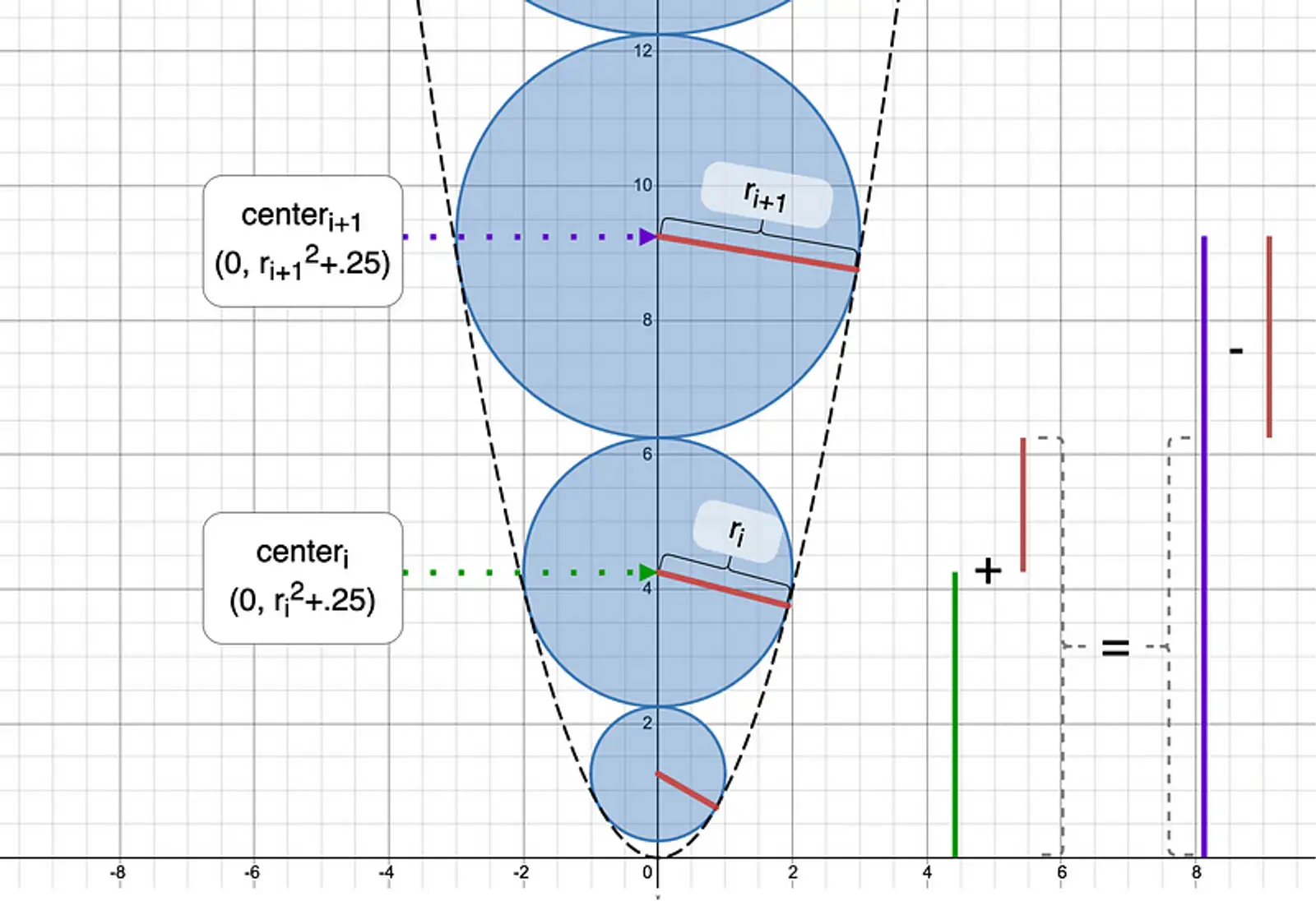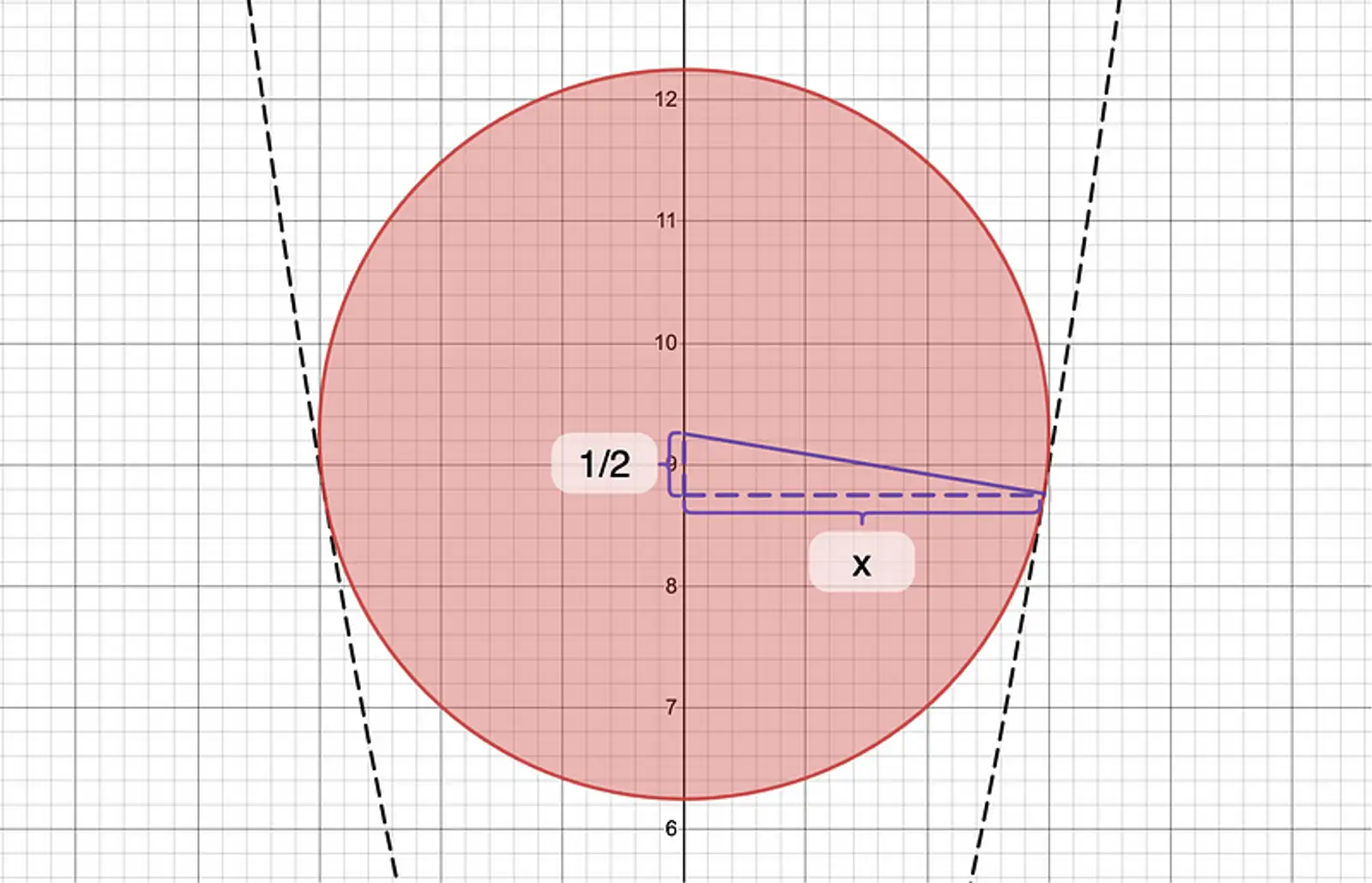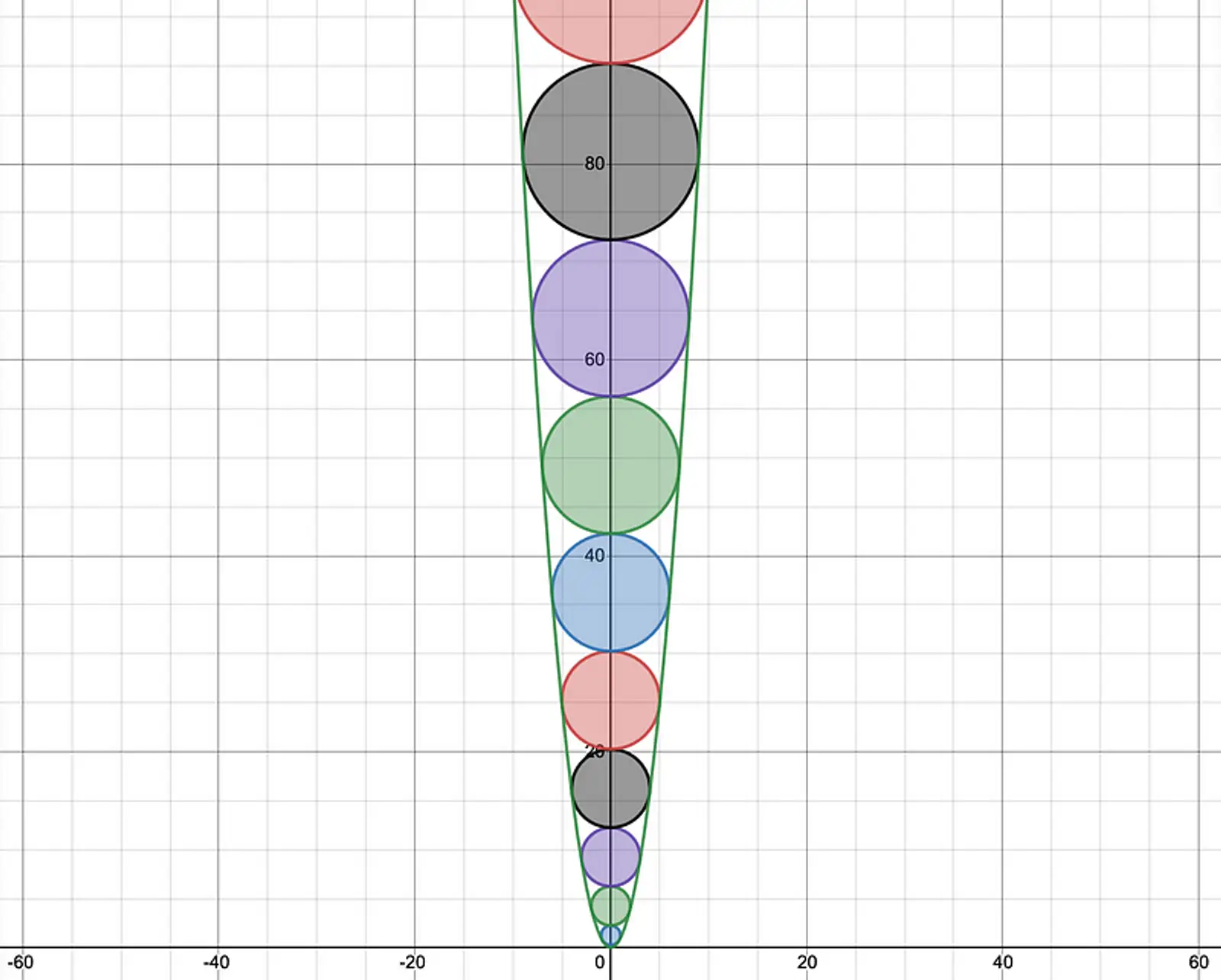New Year's Math Magic: Inscribing Circles Inside the Standard Parabola
Motivation
On New Year’s Eve, I came across a puzzling twitter post:
I thought, surely, the answer must be a nasty decimal - I was far from wrong, and my curiosity led me down a road to a mind-blowing realization.
Pen Meets Paper
With a bit of calculus, the answer was in close reach. To my delight, my work came out to a clean 2022. Ah, yes - only now had I realized I stumbled upon a New Years Eve joke! Still, my curiosity persisted - is this merely a coincidence, or a generalizable rule?
A Beautify Discovery
I hypothesized that for all , if a circle with radius is inscribed in the standard parabola, then the subsequent inscribed circle must have radius .
More formally, I want to determine if:
center center
for all , not restricted to whole numbers.
The Radius Segment
First, we must model the radius of each circle as the segment connecting (for simplicity) the half of the standard parabola to the -axis that is simultaneously normal to such parabola.
Given this interpretation, we can find the slope of the radius by finding the negative reciprocal of the parabola’s slope.
slope of radius
With this slope, we can express the radius as the sum of horizontal and vertical components. The horizontal component is, well, the definition of . The vertical component, fascinatingly, is always , since moving backwards units along the -axis yields a -change of .
Hence, the length of the radius is the magnitude of the resulting hypotenuse. We can calculate the -value of the center accordingly.
center
Proof by Induction
Base Case
Fundamentally, there exists a circle of radius of radius , and its center can be found by . The circle with is excluded from the domain since it constructs a point. By the way, notice anything special about the constant ? It’s the focus of the standard parabola!
Inductive Step
Having supported the base case, if we prove that our hypothesis holds true when transitioning from to , then our hypothesis must hold true for all .
Let’s begin by stating our hypothesis, and manipulating the relationship until a conclusion is reached.
center center
In conclusion, we accept the hypotheses - the radius of every circle inscribed in the standard parabola is one greater than that of the circle underneath.
😂 Ah, and that’s why the tweet was made “traditionally”.
What about non-standard Parabolas?
So far, we have seen that inscribing circles by the horizontal bounds of the standard parabola and circle beneath is possible for incrementing radii, starting at any non-zero radius.
Keep imagining the standard parabola with its inscribed circles. When the function becomes , where does not hold, a vertical (and in a way, horizontal) stretch transformation is applied. Hence, this same transformation will be applied to the inscribed circles, yielding ellipses - the unique property of inscribed circles with incrementing radii does not hold here.
Visualization
To verify my work so far, I wrote a one-line python program to generate the equations for first 20 inscribed circles of whole-number radii.
[print(f'x^2 +(y - {r}^2 - 1/4)^2 <= {r}^2') for r in range(1, 101)]Yielding the output:
x^2 +(y - 1^2 - 1/4)^2 <= 1^2
x^2 +(y - 2^2 - 1/4)^2 <= 2^2
x^2 +(y - 3^2 - 1/4)^2 <= 3^2
...
x^2 +(y - 99^2 - 1/4)^2 <= 99^2
x^2 +(y - 100^2 - 1/4)^2 <= 100^2Pasting into Desmos renders the beautiful phenomenon I stumbled upon to start 2022.
Thanks for reading!


